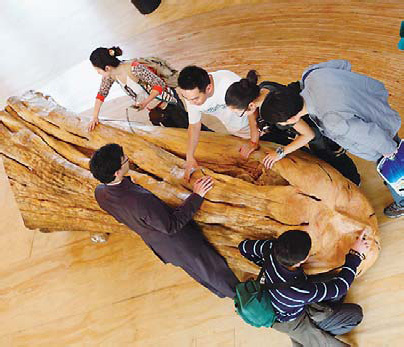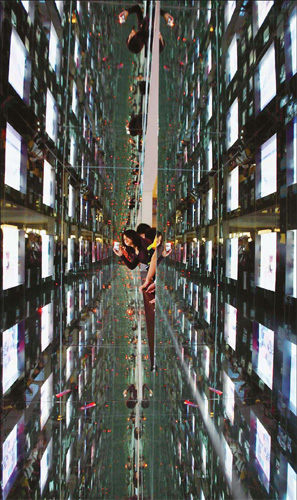Wholesome relations with the locals
 |
| Visitors inside the Chile Pavilion. |
The Chile Pavilion gives visitors the chance to interact with people from that country in real time.
Pavilion operators at the Expo 2010 Shanghai say if a hole were dug from the Expo Garden through the earth's core to the other side of the world, it ended in the world's longest country - Chile.
While each pavilion at the Expo has unique features, the Chile Pavilion differs from other national pavilions in how visitors are able to interact with Chileans in their native country.
To give visitors a glimpse into the lives of Chileans, a video camera has been installed into a car that travels to different locations in Chile. A satellite transmits real-time images of Chile and its people to the pavilion.
"The camera operators select targets randomly in Chile, either on the street or in a market to show people in real situations," said Jorge Iglesias, the pavilion director.
"Visitors can see clearly what life is like in Chile," he said.
"Compared to pavilions that feature pre-recorded images, the experience I had in the Chile Pavilion was more interesting and made me feel like I am involved in their lives," said Ding Liang, a visitor at the pavilion.
Themed "City of Relations", the pavilion occupies 3,000 square meters and is designed to show how city life will improve by creating better relationships between people.
"We can have better urban lives if we improve relationships between people," said Iglesias. "We want to take people back to the origin and show them the most important subject is people, not buildings, in the cities."
Divided into eight areas, the pavilion allows visitors to explore the essence of the country, including its natural landscapes and economic development. The pavilion also encourages people to think about the critical problems faced in the urbanization process by sharing problems and providing some possible solutions.
To emphasize the importance of relationships between people, pavilion operators have created a friendly atmosphere. Before people enter the pavilion, bilingual staff will teach visitors say "hello" in Spanish to demonstrate how better relationships can make life full of fun and happiness.
Meanwhile, to accommodate visitors, 60 Chileans, most of whom speak Chinese, are stationed in the pavilion to provide information to the visitors.
"The best thing about the pavilion is the people work here. They are the first line of communication with the Chinese," said Iglesias. "How can you have a relationship without people? You cannot have a relationship with a building."
In one of the final sections of the pavilion, visitors have chance to enjoy some Chilean wines. More than 40 brands of wine are sold at one time and some 150 different brands will be featured in the pavilion by the end of the Expo. All wines are affordable, ranging from 138 yuan to 198 yuan a bottle. They offer another way to socialize and feel a part of the Chilean lifestyle and culture.
 |
| The Chile Pavilion differs from other national pavilions in that visitors are able to interact with Chileans in their native country. |
 0
0 







Go to Forum >>0 Comments